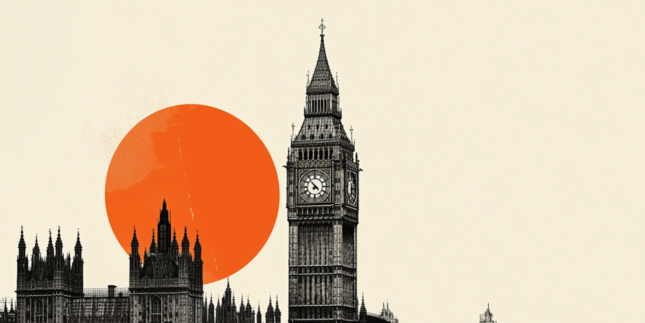EUR/USD Forecast and News
EUR/USD eases from around 1.1800 after US GDP figures
The US Dollar is finding some near-term demand after the release of the US Q3 GDP. According to the report, the economy expanded at an annualized rate of 4.3% in the three months to September, well above the 3.3% forecast by market analysts.
Latest EUR News
EUR/USD Technical Overview
From a technical point of view, the EUR/USD pair is bullish, holding on to modest intraday gains. The 4-hour chart shows that the 20-period Simple Moving Average (SMA) holds above the 100- and 200-period SMAs, with the longer measures rising and the 20 SMA turning mildly higher, in line with the dominant bullish trend. The 20 SMA at 1.1739 offers nearby dynamic support, ahead of the 100 SMA at 1.1692. The same chart shows that the Momentum indicator remains well above its midline but lost upward traction, while the Relative Strength Index (RSI) prints at 65, easing from near overbought territory. Overall, the risk skews to the upside, although some consolidation could be expected ahead of the next leg north.
In the daily chart, EUR/USD develops above all its moving averages. The 20-day SMA climbs above the 100- and 200-day SMAs, underscoring a firm bullish bias. Meanwhile, the Momentum indicator remains above its midline but has moderated from recent highs, indicating buying pressure is easing. The Relative Strength Index (RSI) hovers around 69, near overbought, which could cap immediate gains. The 20-day SMA at 1.1681 reinforces the support area seen in the shorter-term charts.
Fundamental Overview
The EUR/USD pair flirted with the 1.1800 mark during European trading hours on Tuesday. The FX board is all about US Dollar (USD) weakness, with the American currency losing ground against all major rivals. Middle East tensions alongside tinned holiday conditions exacerbate the Greenback’s dominant bearish trend.
No relevant data came from Europe. As for the United States (US), the ADP Employment Change 4-week average showed that the private sector added an average of 11,500 jobs per week in the week ending December 6. The USD paused its slide but remained pressured despite the encouraging figure.
Finally, the country released the preliminary estimate of the Q3 Gross Domestic Product (GDP). According to the report released by the Bureau of Economic Analysis (BEA), the economy expanded at an annualized pace of 4.3% in the three months to September, much better than the 3.3% anticipated by market players. The GDP Price Index, an inflation measure, however, jumped to 3.7% from the previous 2.1%, partially offsetting the positive headline. The news gave the Greenback some air, but the American currency retains its bearish tone after the release, barely correcting near-term overbought conditions.
SPECIAL WEEKLY FORECAST
Interested in weekly EUR/USD forecast? Our experts make weekly updates forecasting the next possible moves of the Euro-US Dollar pair. Here you can find the most recent forecast by our market experts:

EUR/USD: US employment, inflation data to shape market mood Premium
The EUR/USD pair surged to a fresh monthly high of 1.1762 in the second week of December, closing it with gains a handful of pips below the level. The advance was solely related to the US Dollar weakness, which was triggered by poor American data and the Federal Reserve monetary policy decision.
Latest EUR Analysis
Editors' picks

Gold to challenge fresh record highs
Gold prices soared to $4,497 early on Monday, as persistent US Dollar weakness and thinned holiday trading exacerbated the bullish run. The bright metal eases following the release of an upbeat US Q3 GDP reading, as USD finds near-term demand in the American session.

EUR/USD eases from around 1.1800 after US GDP figures
The US Dollar is finding some near-term demand after the release of the US Q3 GDP. According to the report, the economy expanded at an annualized rate of 4.3% in the three months to September, well above the 3.3% forecast by market analysts.

GBP/USD retreats below 1.3500 on modest USD recovery
GBP/USD retreats from session highs and trades slightly below 1.3500 in the second half of the day on Tuesday. The US Dollar stages a rebound following the better-than-expected Q3 growth data, limiting the pair's upside ahead of the Christmas break.

Crypto Today: Bitcoin, Ethereum, XRP decline as risk-off sentiment escalates
Bitcoin remains under pressure, trading above the $87,000 support at the time of writing on Tuesday. Selling pressure has continued to weigh on the broader cryptocurrency market since Monday, triggering declines across altcoins, including Ethereum and Ripple.

Ten questions that matter going into 2026
2026 may be less about a neat “base case” and more about a regime shift—the market can reprice what matters most (growth, inflation, fiscal, geopolitics, concentration). The biggest trap is false comfort: the same trades can look defensive… right up until they become crowded.
Majors
Cryptocurrencies
Signatures
EUR/USD Yearly forecast
How could EUR/USD move this year? Our experts make a EUR/USD update forecasting the possible moves of the euro-dollar pair during the whole year. Don't miss our 2025 EUR/USD forecast!
EUR/USD FORECAST 2025
In the EUR/USD 2025 Forecast , FXStreet Chief Analyst Valeria Bednarik suggests that the macroeconomic landscape favors the US Dollar (USD) over the Euro (EUR), with a potential return to parity between the currencies.
While Donald Trump’s upcoming presidency may introduce higher inflation-related risks for the United States (US), the US economy demonstrated the strongest pandemic recovery among G7 nations, as measured by GDP, starting under Trump’s previous administration and following under Joe Biden.
From a technical point of view, the EUR/USD pair faces a bearish outlook for 2025, with technical indicators suggesting further declines after breaking below key moving averages and encountering strong resistance near 1.1200. The pair could test the 1.0330 zone, with the potential for parity if selling pressure persists. While a bearish trend is most likely, a sudden EU economic recovery or US weakness could push the pair toward 1.0600, with a possible rally to 1.1000 later in the year, though not before mid-2025.
MOST INFLUENTIAL FACTORS IN 2025 FOR EUR/USD
The year will be politically marked by Trump’s return to the White House. A Republican government is seen as positive for financial markets, but Trump’s pledge to cut taxes and impose tariffs on foreign goods and services may introduce uncertainty to both the political and economic landscape.
In the Eurozone, attention will focus on political turmoil in Germany and France, the two largest economies in the bloc. Germany is set to hold snap elections following a no-confidence vote against Chancellor Olaf Scholz in the Bundestag.
Influential Institutions & People for the EUR/USD
The European Central Bank (ECB)
The European Central Bank (ECB) is the central bank empowered to manage monetary policy for the Eurozone. With its beginnings in Germany in 1998, the ECB’s mandate is to maintain price stability in the Eurozone, so that the Euro’s (EUR) purchasing power is not eroded by inflation. As an entity independent of individual European Union countries and institutions, the ECB targets a year-on-year increase in consumer prices of 2% over the medium term. Another of its tasks is controlling the money supply. This involves, for instance, setting interest rates throughout the Eurozone. The European Central Bank’s work is organized via the following decision-making bodies: the Executive Board, the Governing Council and the General Council. Christine Lagarde has been the President of the ECB since November 1, 2019. Her speeches, statements and comments are an important source of volatility, especially for the Euro and the currencies traded against the European currency.
ECB official website , on X and YouTubeThe Federal Reserve (Fed)
The Federal Reserve (Fed) is the central bank of the United States (US) and it has two main targets: to maintain the unemployment rate at its lowest possible levels and to keep inflation around 2%. The Federal Reserve System's structure is composed of the presidentially appointed Board of Governors and the partially appointed Federal Open Market Committee (FOMC). The FOMC organizes eight scheduled meetings in a year to review economic and financial conditions. It also determines the appropriate stance of monetary policy and assesses the risks to its long-run goals of price stability and sustainable economic growth. The FOMC Minutes, which are released by the Board of Governors of the Federal Reserve weeks after the latest meeting, are a guide to the future US interest-rate policy.
Fed official website , on X and FacebookChristine Lagarde
Christine Lagarde was born in 1956 in Paris, France. Lagarde, who graduated from Paris West University Nanterre La Défense, became President of the European Central Bank (ECB) on November 1, 2019. Prior to that, she served as Chairman and Managing Director of the International Monetary Fund (IMF) between 2011 and 2019. Lagarde previously held various senior ministerial posts in the Government of France: she was Minister of the Economy, Finance and Industry (2007-2011), Minister of Agriculture and Fishing (2007) and Minister of Commerce (2005-2007).
Lagarde on ECB's Profile and WikipediaJerome Powell
Jerome Powell took office as chairman of the Board of Governors of the Federal Reserve System in February 2018, for a four-year term ending in February 2022. He was sworn in on May 23, 2022, for a second term as Chairman ending May 15, 2026. Born in Washington D.C., he received a bachelor’s degree in politics from Princeton University in 1975 and earned a law degree from Georgetown University in 1979. Powell served as an assistant secretary and as undersecretary of the Treasury under President George H.W. Bush. He also worked as a lawyer and investment banker in New York City. From 1997 through 2005, Powell was a partner at The Carlyle Group.
Jerome Powell Fed's Profile and WikipediaECB NEWS & ANALYSIS
FED NEWS & ANALYSIS
About EUR/USD
The EUR/USD (or Euro Dollar) currency pair belongs to the group of 'Majors', a term used t o describe the most important currency pairs in the world. This group also includes GBP/USD, USD/JPY, AUD/USD , USD/CHF, NZD/USD and USD/CAD . The popularity of the Euro Dollar pair stems from its representation of two of the world’s largest economies: the Eurozone and the United States.
The EUR/USD is one of the most widely traded currency pairs in the Forex market, where the Euro serves as the base currency and the US Dollar as the counter currency. It accounts for more than half of the total trading volume in the Forex market, making gaps almost inexistent, let alone sudden reversals caused by breakaway gaps.
The EUR/USD is usually quiet during the Asian session, as economic data influencing the pair is usually released during the European or US sessions. Activity increases as European traders begin their day, leading to heightened trading volume. This activity slows around midday during the European lunch break but picks up again when US markets come online.
Related pairs
GBP/USD
The GBP/USD (or Pound Dollar) currency pair belongs to the group of 'Majors', referring to the most important and widely traded pairs in the world. The pair is also known as “the Cable”, a term originating in the mid-19th century that refers to the first transatlantic telegraph connecting Great Britain and the United States. As a closely watched and widely traded currency pair, it features the British Pound as the base currency and the US Dollar as the counter currency. For that reason, macroeconomic data from both the United States and the United Kingdom significantly impacts its price. One notable event that affected the volatility of the pair was Brexit.
USD/JPY
The USD/JPY (US Dollar Japanese Yen) currency pair is one of the 'Majors', a group of the most important currency pairs in the world. The Japanese Yen, known for its low interest rate, is frequently used in carry trades, making it one of the most traded currencies worldwide. In the USD/JPY pair, the US Dollar is the base currency and the Japanese Yen serves as the counter currency.
Trading USD/JPY is also known as trading the "ninja" or the "gopher", although the latter nickname is more frequently associated with the GBP/JPY pair. USD/JPY usually has a positive correlation with other pairs like USD/CHF and USD/CAD, as all three use the US Dollar as the base currency. The value of the pair is often influenced by interest-rate differentials between the two central banks: the Federal Reserve (Fed) and the Bank of Japan (BoJ).